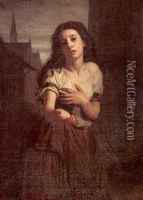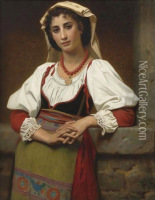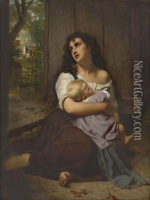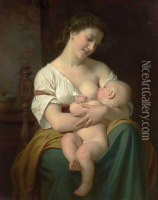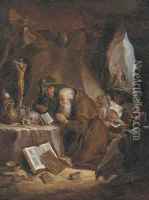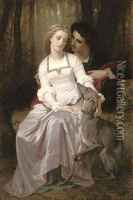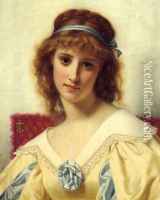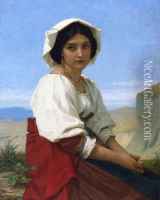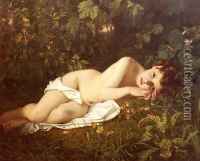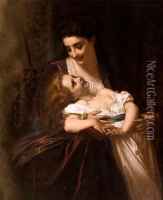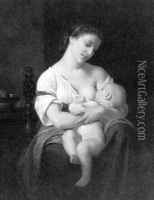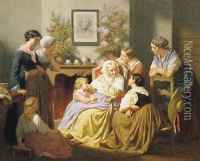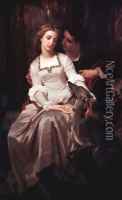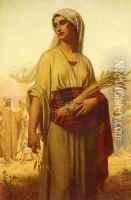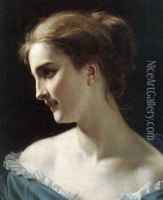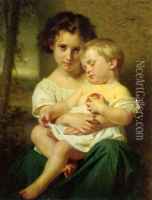Hugues Merle Paintings
Hugues Merle was a French painter who was born in 1823 in Saint Martin, France. He was known for his genre paintings and his works that often depicted scenes of family life, children, and social and emotional narratives that resonated with the Victorian era's sensibilities. Merle's work was characterized by its detailed portrayal of human emotion and its narrative quality, which won him considerable acclaim during his lifetime.
Merle studied art under the tutelage of Léon Cogniet, a respected French history painter. His talent was recognized early on, and he started exhibiting his works at the Paris Salon, the official art exhibition of the Académie des Beaux-Arts in Paris, from 1847 onwards. His paintings quickly gained popularity, and he became known for his ability to capture the tender and intimate moments of everyday life.
In the 1860s, Merle's reputation was further cemented by his association with the famous artist William-Adolphe Bouguereau. The two artists had a close relationship, and their styles were similar in the delicate and refined portrayal of their subjects. Merle even painted portraits of Bouguereau's family, which was a testament to their friendship and mutual respect.
Merle's works were widely appreciated for their emotional depth. One of his most famous paintings, 'The Pardon' (Le Pardon), shows a mother forgiving her son, which was a subject that resonated with many viewers at the time. His other notable works include 'Mary Magdalene in the Cave' and 'The Father’s Curse: The Ungrateful Son,' both of which showcase his skill in depicting complex emotional narratives.
Despite his success, Merle never achieved the same level of fame as some of his contemporaries like Bouguereau. Nevertheless, he received various awards for his work, including medals at the Paris Salon. His paintings were also exhibited internationally, gaining recognition in other European countries and in the United States.
Hugues Merle passed away in 1881 in Paris. Today, his works can be found in various museums and private collections around the world. His legacy continues to be appreciated by art historians and collectors who recognize his contributions to 19th-century French art, particularly in the realm of genre painting and the portrayal of human emotions.
